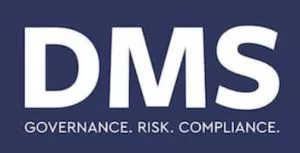Under the European Union's Alternative Investment Fund Managers Directive, investment managers must quickly assess the risk profiles of their funds, understand the various types of risk exposures, and meet the reporting requirements that the directive demands. Here's what managers need to know to comply.
As investment managers begin adapting to the European Union's Alternative Investment Fund Managers Directive (AIFMD), they must quickly assess the risk profiles of their funds on an ongoing basis, understand the various types of risk exposures, and meet the reporting requirements that the directive demands.
AIFMD, which mandates that investment managers receive authorization and comply with regulatory reporting requirements in order to market funds in the EU, became fully operational across the European Union as of July 22, 2014. With its requirement for managers to implement and document a risk management function that is independent of portfolio management, the issue of risk is at the front and center of conversations around AIFMD compliance.
The directive outlines 16 wide-ranging managerial functions that an authorized alternative investment fund manager (AIFM) must perform, with duties ranging from supervision of delegates through to the monitoring of the investment policy and risk management.
The 16 functions have been listed in the AIF Rulebook as:
- decision-making
- supervision of delegates
- monitoring compliance
- monitoring of investment policies
- risk management
- financial control
- monitoring of capital
- internal audit
- complaints handling
- implementing accounting procedures
- liquidity management
- conflicts of interest
- operational risk management
- record-keeping
- remuneration, and
- AIFMD reporting obligations
Whilst AIFMs are allowed to delegate some of these functions, the responsibility of the delegated functions remains squarely with them. Importantly, AIFMs must demonstrate "substance," which effectively means they retain more functions than they delegate and in so doing, are not a so-called "letter-box entity."
In all instances, AIFMs must demonstrate that they have "sufficient resources and ... effective governance arrangements in place to ensure that statutory obligations can be met," according to the Central Bank of Ireland, which authorizes AIFMs.
Risk Management Impacts Other Managerial Functions
Unsurprisingly, AIFMD deals with the traditional investment risk management topics such as stress testing, effective exposure calculations and VaR, to name a few. However, the outputs from a risk management system can – and should – be used to feed other managerial functions, such as investment compliance and monitoring of the investment policy, as well as liquidity management.
Having all this information fed from a centralized risk system ensures consistency across the AIFM's reporting.
Independence is Key
One of the key requirements under AIFMD is the implementation of a solid risk management system that can identify, monitor and manage all material risks pertinent to the AIF's investment strategy. The function must be independent of the portfolio management process, and the policies and processes must be thoroughly documented.
Taking this approach further, many investment managers – particularly those that may not have the existing infrastructure – have seen the benefits in engaging specialist providers of risk calculations and oversight. As well as satisfying regulatory requirements, once the source data has been supplied by an independent party, the generation of risk analytics has proven to be a model embraced by investors, as it provides the ultimate degree of independence.
Liquidity Management
As a consequence of the financial crisis, AIFMs are required to establish appropriate liquidity management procedures and monitor liquidity risks, including performing regular stress tests. This requires analysis and identification of potential mismatches between the assets of the fund and its redemptions (i.e., liabilities), while also factoring in investor concentration. For non-listed securities, this can prove to be especially challenging.
What is needed here is a clear, transparent and meaningful method of understanding the scenarios under which a fund may not be able to meet its liquidity obligations.
Risk Parameters
AIFMD requires the calculation of various parameters, many of which may not be routinely produced by managers, including:
- Regulatory AUM (RAUM)
- Gross-Commitment-Leverage
- Value-at-Risk
- Liquidity Risk
- Counterparty Risk
- Borrowing and Exposure
- Stress Testing
Ongoing Reporting and Customization
AIFMs must submit regular "Annex IV" filings to the relevant local financial regulator. This is the European equivalent of Form PF, and covers areas such as exposures, geographical profile, stress testing, and much more.
The frequency of reporting is driven by RAUM, while the amount of information to be supplied is determined by the holdings and investment strategy of the fund.
To account for the inevitable customization requirements, it's key that any risk reporting solution has the ability to reflect the uniqueness of each fund.
Cost and Technology
A common question surrounding regulatory reporting and compliance is the issue of costs. Concerns for AIFMs include the initial set up, and ongoing reporting to regulators (whether on a quarterly or half-yearly basis) and the time and processes it takes to generate the data that goes into the required reports.
Firms that can offer a comprehensive and cost-effective solution that ticks all the boxes for the full suite of reports will generally find themselves in the running when regulatory reporting proposals are weighed up.
Importantly, many have found synergies between the reports to be provided for the various types of regulatory reports as well as regular investor and investment compliance reports. The commonality of information provided in each can lead to savings, if done correctly.
All these factors are as important to service providers that wish to support AIFMs with outsourced reporting and risk management solutions as they are to the AIFMs. Regulators that authorize AIFMs are keen to emphasize that AIFMs should ensure that the resource persons or companies they engage have the required expertise, time and commitment to handle the complexities of their businesses and the compliance obligations under AIFMD.
Originally published in Tabb Forum on October 6th 2014.
The content of this article is intended to provide a general guide to the subject matter. Specialist advice should be sought about your specific circumstances.

